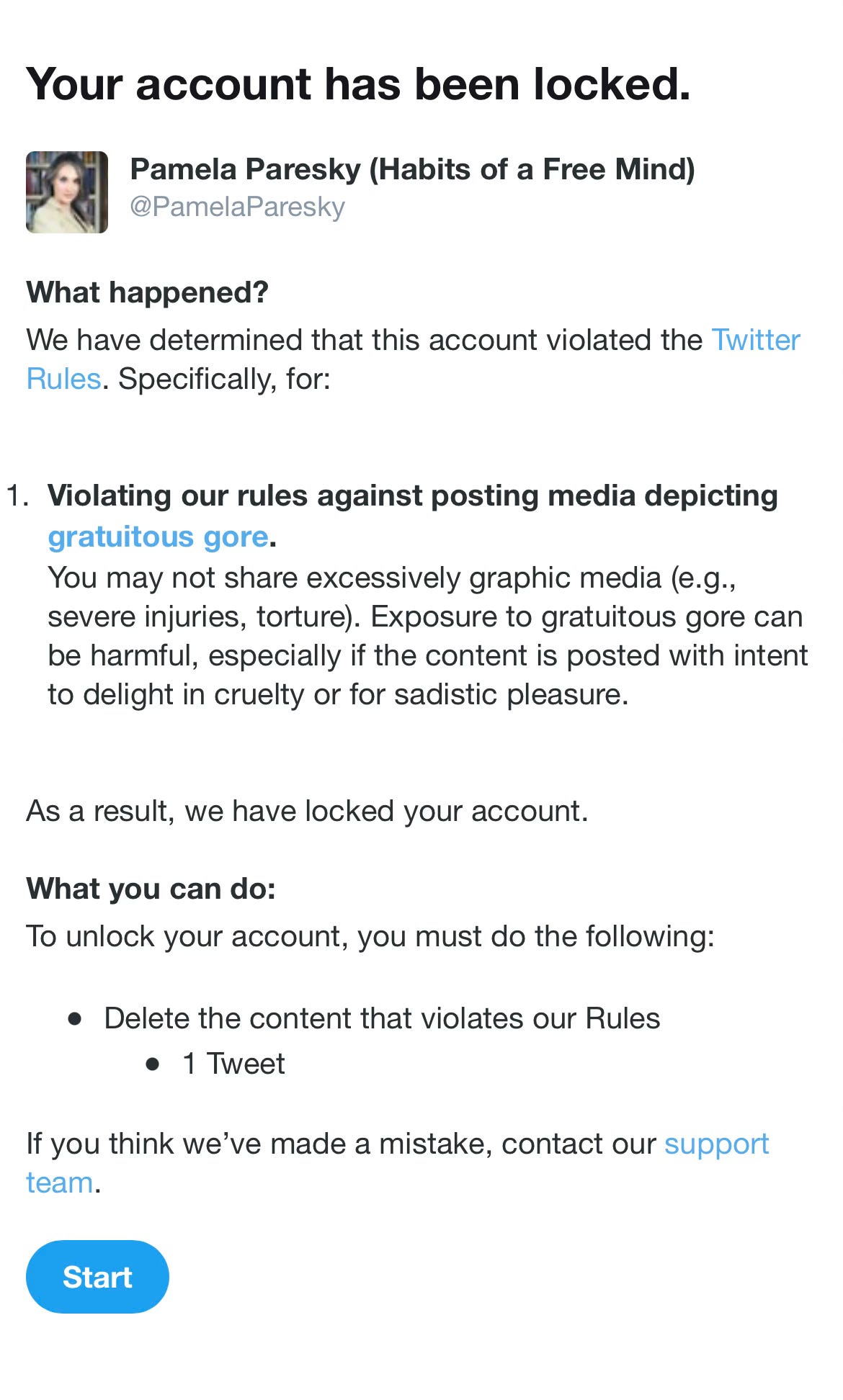I Criticized Twitter — And Then Twitter Locked Me Out
In this issue: Self-harm on Twitter, campus culture, and Ye for antisemitism
Self-harm on Twitter
On August 29th, my colleagues and I at the Network Contagion Research Institute (NCRI) published a report about an issue with Twitter’s “safety” policies: While people expressing unpopular views were being censored, young people who intentionally sliced into their bodies and severely injured themselves were easily finding and encouraging one another on the platform. As we reported, the problem had been brought to Twitter’s attention in October of 2021 by 5Rights, a London-based international child-protection nonprofit. In August of 2022, Twitter had still done little to nothing about it. (Read our report here.)
On October 3rd, I posted a tweet criticizing Twitter for this — specifically that one year after 5Rights told Twitter about the problem, and even after our report, Twitter was not enforcing its “gratuitous gore” policy for self-harm images, nor was it enforcing its policy of prohibiting tweets that “promote or encourage suicide or self-harm.” To illustrate how easy it is to find Tweets with extremely graphic images and even videos of severe self-harm (cutting), I tweeted some common self-harm codewords (hashtags that help self-harmers find one another) along with screenshots of a horrific self-harm post & accompanying comments.
In response, Twitter locked me out of my account (@PamelaParesky). They claimed I violated the same “gratuitous gore” policy I criticized them for not taking seriously. My appeal was quickly denied. For two weeks, while I continued to appeal, I used a new account (@PareskyPamela). You can read my description of the Kafkaesque episode on Wesley Yang’s Substack (here).
After the piece was retweeted by Jonathan Haidt, spoken about by Heather Heying and Bret Weinstein on their podcast, and widely circulated, my account was unlocked — with no communication from Twitter. (The tweet I screencapped now has over 2700 likes…)
Campus Culture
In the meantime, I co-wrote an op-ed for the Boston Globe with my frequent op-ed co-author, Sarah Lawrence Professor Samuel J. Abrams. (A free version is available on the American Enterprise Institute website, where Sam is a Nonresident Fellow.) We argue that an ideological monoculture on campus can create an “us” versus “them” mentality in students, and that administrators can “make a lasting difference by encouraging students to be patient and understanding about missteps and mistakes; to give one another the benefit of the doubt; to be slow to take offense and quick to forgive; to be curious about one another’s genuine views; courageous in sharing authentically; and compassionate even when students don’t understand one another’s pain.”
Read the whole thing at the Boston Globe here or AEI here.
“Ye” For Antisemitism
Thanks to “Ye,” the problem of both left-wing antisemitism and anti-Jewish sentiment among African Americans is being openly discussed. This column by Bret Stephens outlines “one of the most underreported stories in the country — itself a telling indicator in an era that is otherwise hyper-attuned to prejudice and hate.”
Given the nature of antisemitism as a shape-shifting conspiracy theory, it ought to be unsurprising that the kinds of mental illness involving paranoia can be associated with antisemitism. This table below, created by my colleagues and me at the NCRI, illustrates some of the pervasive themes of anti-Jewish conspiracy theories and how they overlap with anti-Zionism. (Read our report on anti-Jewish disinformation here.)
More to come…



